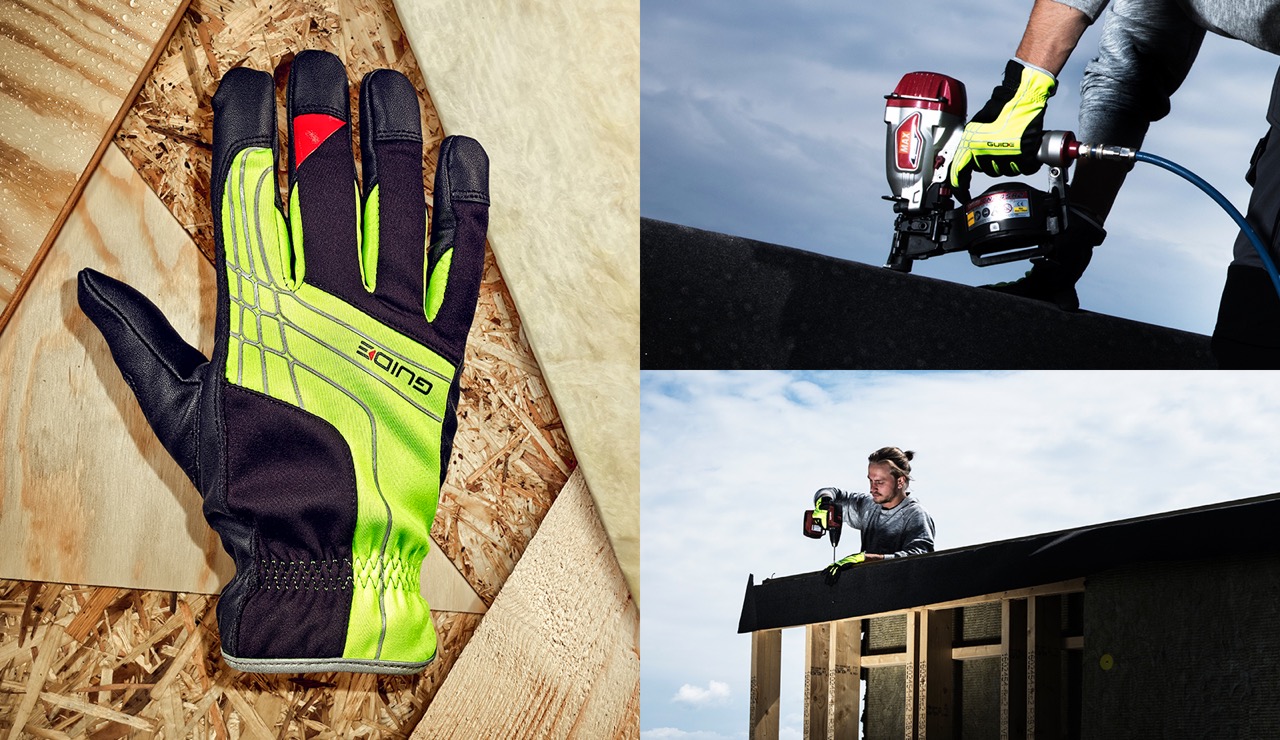While everyone knows that a glove is a garment covering the whole hand, not everyone is familiar with gloves as Personal Protective Equipment. There are 3 categories of gloves specifying levels of risk. Category 1 is for simple gloves, for minimal risks only. Cleaning and gardening gloves are often found here. Category 2 is for intermediate risks, those that are neither minimal nor deadly/ irreversible. This includes gloves offering good puncture and abrasion performance. Category 3 is for irreversible or deadly risks, and gloves in this category must be designed to protect against the highest levels of risk.
Work gloves for woodworking are classified in category 2. Some of the functions that that can be important are: protection against cold, protection against cuts, and water protection – either water resistant or waterproof. Durability and versatility are also important considerations. In addition, gloves should fit! Poor fit can reduce performance and/or protection, and increase the risk of chafing and injury.

Glove size is dependent on hand width and length. To find circumference, wrap a measuring tape around dominant hand (without thumb) just below knuckles, and make a fist. To find length measure from the bottom edge of the palm to the tip of the middle finger. Despite standards, measurements don’t always help.
Personally, I have a circumference of 275 mm (EU-10), but a length of 210 mm (EU-11). However, after spending an hour at a local store selling PPE and attempting to try on several pairs, the results were: Size 10 was hopeless; size 11 felt tight; I ended up with a size 12, as shown in the photo below.


In Europe, there are a number of standards (EN = European Norm) for gloves. EN 420 provides general specifications, EN 388 defines levels of protection against mechanical risks (abrasion / cut / tear / puncture) and electronic discharge, while EN 511 addresses cold and wet issues. Other standards extend requirements for special uses, such as welding EN 12477.
EN 420 specifies some general requirements for protective gloves. For example, it requires that the gloves themselves should not impose a risk or cause injury; that their pH be as close as possible to neutral. It also addresses allergy issues. For example, chromium content is limited to a maximum of 3 mg/kg (chrome VI). It also specifies hand size requirements.

1. Resistance to abrasion
Based on the number of cycles required to abrade through the sample glove (abrasion by sandpaper under a stipulated pressure). Performance level 1 to 4, depending on how many revolutions are required to make a hole in the material. The higher the number, the better the glove. See table below.
2 Blade cut resistance
Based on the number of cycles required to cut through the sample at a constant speed. Performance level 1 to 4.
3 Tear resistance
Based on the amount of force required to tear the sample.
Performance level 1 to 4.
4 Puncture resistance
Working with electronic components can require that gloves be used to reduce the risk of electrostatic discharge. A pictogram will indicate if gloves have passed the relevant test.
EN 511 measures how the glove’s material leads cold (first digit, convective cold with performance level 0-4 where a higher number is better ), as well as its the material’s insulating capacity, with contact (second digit, contact cold with performance level 0-4). A third digit shows if water penetrates the glove after 30 minutes.
Many glove manufacturers have detailed information about their products, and protection standards. This is true of Australian Ansell Limited and the Swedish, Skydda Protecting People Europe AB, which markets products under the name Guide.
Living in Norway, I try to support Scandinavian companies. Skydde PPE has its own YouTube channel. Most videos on the channel are in Swedish, unfortunately: http://guidegloves.com/en/guide/film.html At least two of their videos are made in Bergen to emphasize gloves that protect against wet and cold (in a kindergarden) in addition to mechanical injury (carpentry). Here the spoken Bergen dialect is texted into Swedish.

